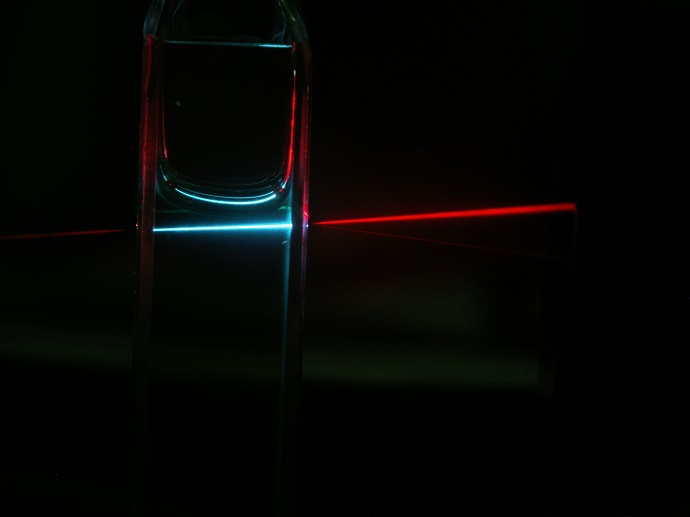27.11.2014
Solar cells can only use photons with energies above a specific threshold to generate electricity. A German-Australian research collaboration has now combined solar cells with an organic material which can “add up” low-energy photons to yield higher-energy light, which can then be harvested by the solar cell. In an invited review paper published in the prestigious journal Energy & Environmental Science the scientists give an overview on the fascinating phenomenon of photonic upconversion and report new results: The organic layers show less photo-degradation than suspected and may also be used for other optoelectronics applications.
Every solar cell only uses a small part of the solar spectrum, mainly because it can absorb only light with energies above a material-specific threshold energy. One approach towards circumventing those losses and using more “colors” of the sunlight is photonic upconversion: The solar cell’s backside is coated with a material which can add up low-energy (“red”) photons to yield higher-energy (“blue”) photons which are radiated back towards the solar cell, thus expanding its current harvest. Since 2011, HZB scientists around Prof. Dr. Klaus Lips are collaborating with The University of New South Wales (Sydney, Australia) in investigating novel upconversion materials which have higher efficiencies than the classically employed rare-earth phosphors.
New class of materials
The novel class of organic upconversion materials is based on so-called triplet-triplet annihilation (TTA), and combines strong absorptivity with potentially high quantum yield. The first lab experiments have been published in 2012 in Energy & Environmental Science (see HZB news report )
“This first report has already been cited over 90 times, which is why we received an invitation to write a review article on this topic” says Dr. Tim Schulze from the Lips team. With an impact factor of >15, Energy & Environmental Science is one of the most distinguished journals in the field.
New data on longevity and efficiency
In the recently published review article, Schulze not only presents a comprehensive overview on the topic but also previously unpublished new data: Together with the Australian partners around Prof. Timothy Schmidt, Schulze has now also investigated the longevity of the TTA molecules under illumination – an extremely critical property for organic materials. The reported results are promising: Even the present not optimized system would last for some years behind a solar cell! “We also have ideas about how to further improve the material”, Schulze says.
At the same time the group reports new record values for the photocurrent enhancement of upconversion-assisted solar cells. “The reached numbers are still far away from a real-world application, but significantly higher than the ones realized with lanthanoid upconversion.”, Schulze explains. And Lips adds: “TTA upconversion is a generic optical technology with potential applications beyond thin-film solar cells. They could also assist photo-electrochemical water splitting or organic LEDs.” The collaboration with Sydney will continue and 2015 will see more joint experiments.
Review-Article 2014: Photochemical upconversion: Present status and prospects for its application to solar energy conversion, Tim Ferdinand Schulze and Timothy W Schmidt, Energy Environ. Sci., 2014
DOI: 10.1039/C4EE02481H















